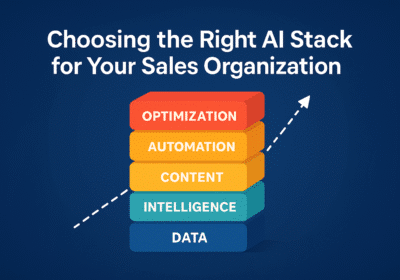Autumn is the time of year for sales leaders, managers, and CEOs to begin laying the groundwork for next year’s success. Have you considered how your current sales compensation plans impact your team’s motivation and productivity? Now is the ideal moment to evaluate, adjust, and deliver these plans, preferably by December 1st. Doing so can significantly influence your team’s drive to close deals in December and build momentum heading into the next fiscal year.
Sales compensation should be motivating and rewarding for employees. It directly shapes your sales team’s behaviors and priorities. An effective plan incentivizes the right actions and deters the wrong ones.
Consider a common pitfall: salespeople holding back deals to inflate their numbers for the following year. Does your current compensation structure inadvertently reward this practice? If so, you’re unintentionally harming your year-end results.
To counter this, strategically incorporate compensation escalators and cliffs into your plan. Escalators progressively reward increased sales performance throughout the year. Higher performance equals higher commission rates, driving your sales team to push forward continually.
Commission cliffs reset commission rates at the beginning of each year, creating a sense of urgency to close deals before the end of December. Communicating these compensation details clearly by early December ensures your team understands what’s at stake.
Don’t hold your team back!
Another critical compensation consideration is eliminating commission caps. While some organizations cap commissions to control expenses, this practice can backfire dramatically. Caps tell your top-performing salespeople that their exceptional efforts are neither valued nor rewarded appropriately. This demotivates your top talent and encourages them to seek opportunities elsewhere that offer uncapped rewards.
Removing commission caps signals that the organization fully supports and rewards outstanding performance. Have you considered how much growth your company might achieve if artificial constraints didn’t limit your sales team?
When evaluating compensation, look beyond simple cost containment. Consider the true profitability of incentivizing increased sales volume. Once salespeople reach their targets and enter accelerators, each additional dollar earned typically comes at a lower incremental cost to your organization.
Sales transactions earlier in the year have already covered the salesperson’s base salary once they have met their annual quota. In fact, at 100% of quota, the salesperson should have covered all their costs and their share of the overall company’s revenue needs. Thus, every extra sale at escalated commission rates still contributes positively to your overall profitability.
Run the numbers yourself. You might be surprised to discover that incentivizing higher performance through aggressive accelerators and no caps makes financial sense.
It is time to enhance the sales team
As you finalize your compensation strategy, also dedicate time to strategic projects. These initiatives aren’t your daily sales activities or routine responsibilities. Instead, they’re investments in future capability, projects that position your sales team to perform better next year. What strategic projects should you prioritize? Consider three categories:
- technology,
- human resources,
- skills development.
Technology projects often deliver significant returns on investment. Today’s sales teams need advanced tools to compete effectively. Artificial intelligence (AI), CRM enhancements, or modern sales enablement platforms can dramatically improve efficiency and results. Have you recently reviewed your sales technology stack? Identify gaps, evaluate new tools, and establish implementation timelines before the end of the year. Doing so ensures your salespeople enter the new year equipped to succeed.
Equally important is evaluating your human resources strategy. Hiring isn’t limited to quota-carrying salespeople. Sometimes, adding support roles, such as sales analysts, demo specialists, or business development representatives, can multiply your team’s productivity.
These productivity roles don’t carry quotas directly but significantly enable salespeople to close more deals. An analyst might uncover insights that improve targeting, while a demo specialist frees up salespeople to spend more time prospecting and closing. Have you recently assessed your team’s structure? Perhaps it’s time to consider strategic hires that enhance the team’s overall effectiveness.
Skills development projects, often overlooked, can yield impressive returns. Salespeople, especially in smaller organizations, frequently lack structured training. They may excel in certain aspects of selling but struggle elsewhere.
Your best closer might hesitate during initial prospecting calls. Your top prospecter might falter during product demonstrations. Identifying these skill gaps and addressing them through targeted training can significantly boost your team’s overall performance.
Begin by evaluating each salesperson’s strengths and weaknesses in relation to your documented sales process. If you haven’t clearly defined your sales process, that’s your first task. Once documented, pinpoint where each salesperson excels and where they struggle. From there, craft targeted training programs designed to address specific gaps.
Courses can range from basic skills, such as effective prospecting and negotiation, to advanced topics like leveraging artificial intelligence for sales and marketing. Investing in targeted skills development doesn’t just improve individual performance; it strengthens your entire sales organization.
Beyond skills training, encourage internal knowledge sharing and collaboration. Your sales team likely has diverse strengths and experiences. Foster a culture where team members regularly learn from one another.
Perhaps your top negotiator can lead a workshop on closing techniques. Maybe your best presenter can coach colleagues on practical product demonstrations. Internal training leverages existing talent and strengthens team cohesion. Moreover, it fosters a culture of continuous improvement, which is essential for sustained long-term success.
What’s your plan?
Looking further ahead, effective planning involves considering your next year’s strategy now. Too many companies delay strategic planning until January, losing valuable time. Instead, start crafting detailed quarterly plans now. Segment your goals by territory, product line, or customer type. This disciplined approach ensures clarity and accountability across your sales organization. It also provides ample time to negotiate favorable purchasing agreements or pricing structures well before the new year begins.
For businesses with multiple product lines, proactively managing product transitions is crucial. Replacing older products with newer models without harming sales or profitability requires careful planning and execution.
Assess your product lifecycle now and plan for strategic transitions to ensure optimal performance. Avoid cannibalizing profitable products prematurely. Instead, leverage your product strategy to drive incremental sales and margins. Are you actively managing these transitions or simply reacting as products age? Proactive planning positions your team for smoother transitions and sustained growth.
Strategic planning also involves assessing the overall capabilities of the company. Taking stock now allows you to identify gaps and prioritize improvements. Consider conducting a formal sales assessment. Such assessments benchmark your performance against industry best practices. You’ll gain clarity on your strengths and weaknesses, enabling you to make informed strategic decisions. Your lead generation may lag behind that of your competitors. Or your sales forecasting accuracy needs improvement. Identifying these areas now gives you ample time to address them thoughtfully and effectively.
However, avoid tackling too many initiatives simultaneously. Strategic improvements require focused effort and resources. Select one or two high-impact areas for improvement next year. Concentrate your team’s attention and resources on these initiatives. Successfully executing fewer projects yields greater long-term results than partially completing numerous initiatives.
If your assessment reveals multiple significant gaps, consider seeking external expertise to address these areas. Fractional sales leadership or consulting support can accelerate your progress. External experts bring proven methodologies, industry benchmarks, and fresh perspectives, enabling quicker and more effective improvements.
Ultimately, effective sales management requires intentionality and discipline. Delivering compensation plans by early December demonstrates organizational discipline and respect for your salespeople. Including strategic escalators and cliffs ensures your compensation structure aligns with desired behaviors.
Removing commission caps motivates top performers to exceed expectations, driving overall growth. Investing in strategic projects, such as technology, people, and skills development, strengthens your sales team’s capabilities. Proactively planning for FY25 positions your organization for sustained success.
You can receive more ideas and feedback from the B2B Sales Lab. The B2B Sales Lab is a resource where you can ask your peers questions and receive assistance. In the lab, you can ask questions that are bothering you or that you think you need help with, and others who have been through the same situation will be happy to assist you. You can join the lab by visiting www.b2b-sales–lab.com and receive a complimentary 90-day trial of the community.
Taking these steps now ensures your sales organization enters next year prepared and motivated. The result? Higher productivity, improved morale, and accelerated growth. Don’t wait until January to start planning. Act now, and give your sales team and your entire organization the best possible chance for success.
Suppose you’re unsure where to start or need additional guidance, consider leveraging external expertise. Fractional sales leaders and consultants can quickly assess your situation, recommend targeted improvements, and support implementation. Your proactive efforts today will yield significant dividends throughout the coming year and beyond.
Here Are 4 Actionable Steps Sales Leaders Can Take Today:
- Evaluate and Refine Your Sales Compensation Plan: Review your current sales compensation structure immediately. Identify whether it incentivizes the desired behaviors, such as year-end deal closures and sustained motivation. Specifically, consider incorporating escalators to reward incremental performance and cliffs to reset commission rates annually, while removing commission caps to motivate top performers fully. Clearly communicate these changes to your team by December 1st.
- Perform a Quick Audit of Your Sales Technology Stack: Take a moment today to review your existing sales tools and identify any critical gaps. Prioritize advanced solutions, such as artificial intelligence-driven sales enablement platforms or CRM enhancements, that can significantly boost your team’s productivity. Set clear timelines to evaluate and implement new technologies before the end of the year.
- Assess Team Structure to Identify Strategic Hiring Opportunities: Review your current sales team structure today. Identify roles beyond quota-carrying salespeople, such as sales analysts, demo specialists, or business development representatives, that could substantially multiply your team’s efficiency. Determine if adding strategic support roles could empower your salespeople to close more deals and plan accordingly.
- Identify Skill Gaps and Develop Targeted Training Plans: Conduct a rapid assessment of each salesperson’s strengths and weaknesses, aligning with your documented sales process. Highlight specific skill gaps in prospecting, negotiation, presenting, or leveraging technology, and create a targeted training plan tailored to closing these gaps. Additionally, schedule internal knowledge-sharing sessions leveraging your top performers to enhance overall team capabilities and foster continuous learning quickly.




